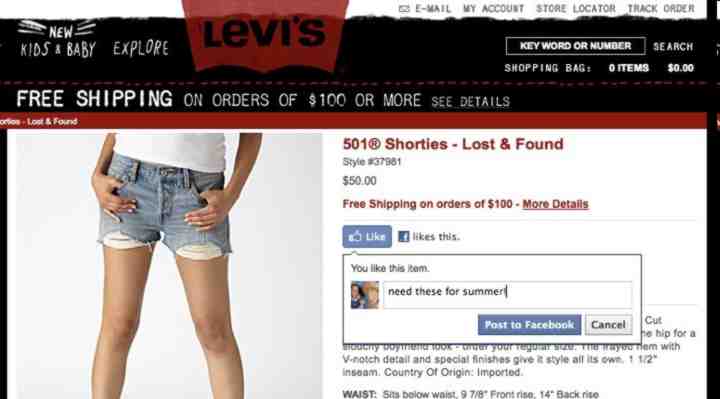| What Facebook has in store - F8 |
| Written by Ian Elliot |
| Thursday, 29 April 2010 |
|
Facebook's new Graph API is a RESTful way to create new applications that might just get you access to an audience of 400 million users. This and more from the F8 conference. If you are a web application then it seems the way to woo developers is to have a conference. Hard on the heals of Twitter's Chirp conference comes Facebook's F8, the third of its annual developer conferences held on 21 April 2010 in San Fransisco.
The key announcements at the conference are designed to make it easier for people to use the site to gather information that might be stored in a distributed fashion across multiple sites. Facebook uses the term "social graph" to mean the interconnections between users and what they care about and its aim is to make the graph more usable. There are two key developments - Social Plugins and The Graph API. Social PluginsThe first idea is that the social graphic can be manipulated using social plugins - i.e. browser plugins that allow the user to add stuff to their Facebook page while they are getting on with other, unrelated stuff. It all sounds quite exciting but when you actually look at what is on offer it isn't so revolutionary. Most of the plugins announced at F8 sound like extended "bookmark" buttons:
The idea is that web designers and developers will add the buttons to their sites and make it easier to work with Facebook. What is attractive about the Facebook social addins is that they seem to be well implemented and well integrated into the Facebook system - and Facebook has a lot of users. What is less attractive is the fact that they only target Facebook and ignore the other social media and news sites such as Twitter, Digg etc. Facebook has just made bookmark button clutter even worse.
The Graph APIThe second big idea announced at F8 is the Graph API this implements a REST-like system for retrieving objects. A URI such as
returns the data about the object corresponding to ID as JSON - which is of course easy to work with using Javascript. IDs can be numeric or descriptive. Connections between objects can also be retrieved using a connection type specifier. Connection types vary according to the type of object but are typically something like friends, feed, likes, movies and so on. Although the connections are documented you can also get a live "run time" list of connections that an object supports using an introspection call - i.e. it returns a list of supported connections. Of course all of this access needs some security and Facebook is using OAuth 2.0. You have to register your application to get an appID and code. These are used to make a request to the user for authorization. As long as they agree to provide the data your application can continue. The need for authorization is likely to make things work not quite as smoothly as they would if all data were freely available - but users do seem to care about their privacy! The REST-like API also includes the ability to POST data to the graph. At the moment you can write to the users feed/wall, post comments, write a link and so on. This makes interactive apps possible. You can upload photos and events and search. There is also a push update service that will inform you app when something changes. For example you could launch an event and keep track of people signing up to it. The full API is documented at http://developers.facebook.com/docs/reference/api/
With 400 million Facebook users it is hard not to start thinking up ways of using the new API to tap into that audience. Some other news that might help you put this into context: Facebook credits, i.e. a virtual currency, is being developed - release date unknown. Microsoft and Facebook are working together with a facility to share Office documents. The rules that restrict applications from storing data for a maximum of 24 hours is being lifted. <ASIN:0470277955> <ASIN:0470246669> <ASIN:1430209690> <ASIN:1430225963> <ASIN:0321680774> <ASIN:0596156812> <ASIN:0470568623> <ASIN:0596529325> |
| Last Updated ( Wednesday, 28 April 2010 ) |

